David Heber, M.D., Ph.D.
See book keywords and concepts |
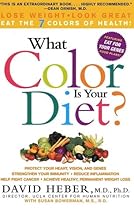 You will learn how to combine the fruits and vegetables with fiber, protein, and certain key vitamins and minerals for optimum health, based on your body using personalized formulas for protein, calories, and fat.
Why This Book?
Most diet books start with a gimmick such as reducing or eliminating fat from the diet. This can result in too little protein and a loss of muscle. Other books encourage diets that are high-protein and high-fat and have little or no sugar or refined carbohydrates. This can eliminate the good carbohydrates such as fruits and vegetables. You will learn how to combine the fruits and vegetables with fiber, protein, and certain key vitamins and minerals for optimum health, based on your body using personalized formulas for protein, calories, and fat.
Why This Book?
Most diet books start with a gimmick such as reducing or eliminating fat from the diet. This can result in too little protein and a loss of muscle. Other books encourage diets that are high-protein and high-fat and have little or no sugar or refined carbohydrates. This can eliminate the good carbohydrates such as fruits and vegetables. |
Nicola Reavley
See book keywords and concepts |
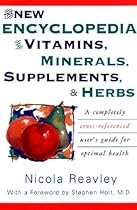 There are many substances, other than vitamins and minerals, which play an essential role in protecting against disease and improving health. Many studies show that people whose diets are high in fruit and vegetables live longer. For example, eating broccoli, carrots and leafy green vegetables does appear to be more protective than taking beta carotene and vitamin C supplements. As well as being a good source of beta carotene and vitamin C, broccoli contains compounds known as indoles that may protect against certain forms of cancer. It is also high in fiber.
When should you take supplements? There are many substances, other than vitamins and minerals, which play an essential role in protecting against disease and improving health. Many studies show that people whose diets are high in fruit and vegetables live longer. For example, eating broccoli, carrots and leafy green vegetables does appear to be more protective than taking beta carotene and vitamin C supplements. As well as being a good source of beta carotene and vitamin C, broccoli contains compounds known as indoles that may protect against certain forms of cancer. It is also high in fiber.
When should you take supplements? |
David Heber, M.D., Ph.D.
See book keywords and concepts |
 Since you won't eat perfectly every day, especially if you travel, vitamins and minerals will help you consistently get the substances you need for good health.
You have probably read about possible side effects and problems with certain vitamins. At first, it seems out of place. How could natural vitamins be toxic? They are not—when taken in reasonable amounts. The most toxic vitamin is vitamin A, and even for this vitamin, you would have to take five times the recommended daily amount to suffer long-term problems. Since you won't eat perfectly every day, especially if you travel, vitamins and minerals will help you consistently get the substances you need for good health.
You have probably read about possible side effects and problems with certain vitamins. At first, it seems out of place. How could natural vitamins be toxic? They are not—when taken in reasonable amounts. The most toxic vitamin is vitamin A, and even for this vitamin, you would have to take five times the recommended daily amount to suffer long-term problems. |
| For each of the vitamins and minerals recommended, there is a biological rationale and a safety factor that is more than generous. Not only are vitamins safe, but they promote your good health!
As you read this, start with a simple program and build up. If you go overboard and try to take too many pills, there is a chance you will burn out and stop taking the important ones. For that reason, the discussion below follows the order of importance and the strength of the evidence out there for taking particular vitamins, minerals, and herbal dietary supplements. |
| This is the basic vitamin pill that has the
RDA levels of all vitamins and minerals. If you take this and eat an equal amount in your diet, there will be no problem. Vitamin E, 400 IUs. The multimineral/multivitamin pill contains only about 15 to 30 IUs of the RDA recommendation for this vitamin. This is supposed to avoid vitamin E deficiency, but it is not enough for you to gain the antioxidant benefits vitamin E can provide. Between 200 and 800 IUs have been shown to have the greatest benefit on immune function for the elderly and to have antioxidant activity for heart disease prevention. |
| The Color Code of fruits and vegetables you are incorporating into your diet, in combination with the few essential vitamins and minerals, will give you what you need to protect your DNA; additional herbal dietary supplements should be regarded only as the fine-tuning. So first practice getting the diet down. Then add your core supplements. Finally, choose those additional supplements and herbs you would like to take.
Notice, I ask you to choose, given the information you have. |
Richard Gerber, M.D.
See book keywords and concepts |
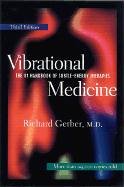 Thus, nutritional deficiency states may include deprivation of not only vitamins and minerals, but also of necessary metals and trace elements like gold, silver, silicon, carbon, and others that have not yet been recognized as being important for optimal health.
In addition to vitamins and trace elements that may be missing from our diets, there are also naturally-occurring substances within food that may be considered an additional source of physiological stress. Thus, nutritional deficiency states may include deprivation of not only vitamins and minerals, but also of necessary metals and trace elements like gold, silver, silicon, carbon, and others that have not yet been recognized as being important for optimal health.
In addition to vitamins and trace elements that may be missing from our diets, there are also naturally-occurring substances within food that may be considered an additional source of physiological stress. |
Berkeley Holistic Health Center and Shepherd Bliss
See book keywords and concepts |
| Elderly or very inactive people usually eat less, and should particularly avoid foods high in calories and low in vitamins and minerals. Persons under inordinant stress or with physical or mental ailments need more protein and calories.
The Alternative Food Pattern
The food pattern of health competence is much more compatible with health and well-being than the typical contemporary American diet. It depends heavily on the first three principles of good nutrition just outlined, and will help people avoid the disorders that are significantly related to our prevalent diet. |
| Ways in Which Family and Friends May Assist You
• Sharing their expertise in pertinent areas: use of herbs in healing information about vitamins and minerals information about your particular kind of surgery from a patient's point of view hospitalization through the eyes of a nurse availability for body-awareness sessions availability for counseling sessions.
• Collecting and recording your preferred type of healing music.
• Being available for ritual/prayer experiences as needed. |
| Mental activity requires less total calories; however, the vitamins and minerals are used more readily. The business person who sits a lot, doesn't exercise, and eats three large meals a day may get into trouble around the waist and could more easily develop health problems.
The simplest weight loss program obviously requires eating less food and calories and being more active physically. Exercise is very helpful to good digestion, assimilation, and circulation. |
| Use unprocessed foods and (in general) non-fat foods— they have more vitamins and minerals per ounce or cupful. Processing can remove, reduce, alter, or destroy these nutrients. It may also add undesirable contaminants. In addition, most processed foods contain a lot of the salt, saturated fat, and sugar so prevalent in our diet. |
| Herbs are a natural balance of many substances which can affect the bodymind, whereas synthetic vitamins and minerals, although equally potent, can cause damage and imbalance, because these substances are not easily eliminated from the system.
We must keep open to the fact that there are many different healing approaches. The measure of their effectiveness should not be some abstract or theoretical idea, but whether or not they work. |
James A. Duke, Ph.D.
See book keywords and concepts |
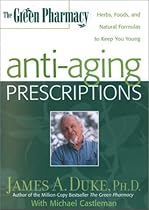 Beyond the familiar vitamins and minerals, naturopathic physicians suggest 2 grams of aspartic acid a day, based on research showing that 75 percent of people with CFS improved while taking the supplement (compared with 25 percent of those who were taking a placebo, or fake pill). So aspartic acid seems like a good idea. Food sources of the nutrient include beans, bean sprouts, and asparagus.
Herbal Treatments That May Help
Some herbs may help alleviate CFS symptoms. But remember, they need time to work. Beyond the familiar vitamins and minerals, naturopathic physicians suggest 2 grams of aspartic acid a day, based on research showing that 75 percent of people with CFS improved while taking the supplement (compared with 25 percent of those who were taking a placebo, or fake pill). So aspartic acid seems like a good idea. Food sources of the nutrient include beans, bean sprouts, and asparagus.
Herbal Treatments That May Help
Some herbs may help alleviate CFS symptoms. But remember, they need time to work. |
Kenny Ausubel
See book keywords and concepts |
 In a 1994 study on the effects of vitamin megadoses on the recurrence of bladder cancer, patients with cancer who received only the recommended daily allowance of vitamins and minerals experienced a tumor recurrence rate of 91 percent. Those who got the megadoses had a recurrence rate of just 41 percent.16
Dr. William Fair, an eminent surgeon and former chairman of the urology department at Memorial Sloan-Kettering Cancer Center, began a nutritional, Chinese herbal and holistic approach to his own colon cancer after four surgeries and chemotherapy failed. In a 1994 study on the effects of vitamin megadoses on the recurrence of bladder cancer, patients with cancer who received only the recommended daily allowance of vitamins and minerals experienced a tumor recurrence rate of 91 percent. Those who got the megadoses had a recurrence rate of just 41 percent.16
Dr. William Fair, an eminent surgeon and former chairman of the urology department at Memorial Sloan-Kettering Cancer Center, began a nutritional, Chinese herbal and holistic approach to his own colon cancer after four surgeries and chemotherapy failed. |
Ruth Winter
See book keywords and concepts |
 You will continue to see vitamins and minerals expressed as percentages on the label, but these figures now refer to the daily values.
Here are the RDIs—
-once familiar to us as RDAs:
Nutrient
Amount vitamin A
5,000 International Units (IU) vitamin C
60 milligrams (mg) thiamin
1.5 mg riboflavin
1.7 mg niacin
20 mg calcium
1.0 gram(g) iron
18 mg vitamin D
400 IU vitamin E
30 IU vitamin B6
2.0 mg folic acid
0.4 mg vitamin Bn
6 micrograms (meg) phosphorus
1.0 g iodine
150 meg magnesium
400 mg zinc
15 mg copper
2mg biotin
0. You will continue to see vitamins and minerals expressed as percentages on the label, but these figures now refer to the daily values.
Here are the RDIs—
-once familiar to us as RDAs:
Nutrient
Amount vitamin A
5,000 International Units (IU) vitamin C
60 milligrams (mg) thiamin
1.5 mg riboflavin
1.7 mg niacin
20 mg calcium
1.0 gram(g) iron
18 mg vitamin D
400 IU vitamin E
30 IU vitamin B6
2.0 mg folic acid
0.4 mg vitamin Bn
6 micrograms (meg) phosphorus
1.0 g iodine
150 meg magnesium
400 mg zinc
15 mg copper
2mg biotin
0. |
Committee on Diet, Nutrition, and Cancer, Assembly of Life Sciences National Research Council
See book keywords and concepts |
 For many years, fiber was regarded as a collection of inert substances in foods, even though it was known to be present in relatively large amounts, compared to vitamins and minerals. These substances were even regarded as a nuisance factor that might interfere with the absorption of minerals in unrefined diets. For many years, fiber was regarded as a collection of inert substances in foods, even though it was known to be present in relatively large amounts, compared to vitamins and minerals. These substances were even regarded as a nuisance factor that might interfere with the absorption of minerals in unrefined diets. |
Robyn Landis
See book keywords and concepts |
 For example, from cabbage you'll not only get vitamins and minerals but also sulfur-containing compounds.
Plenty of pure water is crucial for the skin as well; that's common sense.
HERBAL SKIN TONICS
Gotu kola, figwort root, and Chinese violet leaf ate all good long-term tissue healers and tonics.
Gotu kola is the standout in this category. It is a nerve tonic and has steroidlike compounds called tritetpenes, which are anti-inflammatory. Another component, asiaticoside, appears to expedite the healing of wounds, such as surgical incisions, skin ulcers, trauma, and gangrene. For example, from cabbage you'll not only get vitamins and minerals but also sulfur-containing compounds.
Plenty of pure water is crucial for the skin as well; that's common sense.
HERBAL SKIN TONICS
Gotu kola, figwort root, and Chinese violet leaf ate all good long-term tissue healers and tonics.
Gotu kola is the standout in this category. It is a nerve tonic and has steroidlike compounds called tritetpenes, which are anti-inflammatory. Another component, asiaticoside, appears to expedite the healing of wounds, such as surgical incisions, skin ulcers, trauma, and gangrene. |
| Many of the common vitamins and minerals demonstrated to have anti-cancer properties and other health benefits do so by mitigating chemical and other environmental exposures. Such nutrients are depleted (used up) in the face of toxic exposure, and if they aren't replenished, you're left "naked" in the face of future exposures. Unfortunately, the standard American diet doesn't do a good job of replacing these nutrients, leaving deficiencies that decrease your detoxifying ability at a time of unprecedented chemical exposure. |
| Algae, such as spirulina and chlorella, are good for kids because they have a broad spectrum of vitamins and minerals, are high in easily digestible protein (contain all eight essential amino acids) and chlorophyll (chlorella is the richest known source of chlorophyll on earth), and are easy to get down. They are both nutritive and detoxifying. They can be bought in powder form at the health-food store. They can be given in doses of a teaspoon a day, stirred into liquid. (They will turn any liquid green, which may either disturb or delight your child. |
| For the immune system, these vegetables are also mildly antibacterial generally, and contain assorted immune-supportive and antioxidant vitamins and minerals.
Cabbage is also great for ulcers—a tall glass of juice each day reduces pain. An enzyme sometimes called vitamin U may be responsible for its ability to repair mucous membranes and/or help fight the bacterium now believed to be a factor in at least some ulcers. (See page 431 for more on ulcers.)
Yellow and orange vegetables such as carrots and yellow squash contain carotenes, the vegetable cousins of vitamin A. |
Marion Nestle
See book keywords and concepts |
 In the late summer of 1992, a front-page story in the New York Times told a shocking tale: Armed FDA agents in Washington state had stormed an alternative-medicine clinic that treated patients with injected vitamins and minerals. The Times said that the raid included "F.D.A. agents, dressed in bullet-proof vests, bursting into the clinic and commanding clinic employees to freeze. In the late summer of 1992, a front-page story in the New York Times told a shocking tale: Armed FDA agents in Washington state had stormed an alternative-medicine clinic that treated patients with injected vitamins and minerals. The Times said that the raid included "F.D.A. agents, dressed in bullet-proof vests, bursting into the clinic and commanding clinic employees to freeze. |
| Even though losses of all of the other vitamins and minerals in whole grains were just as substantial, nutritionists considered those nutrients less critical to public health. As a public health strategy, fortification and enrichment ("nutrification") seemed to make good sense because they were "the most rapidly applied, the most flexible, and the most socially acceptable intervention method of changing the intake of nutrients without a vast educational effort and without changing the current food patterns of a given population. |
| Just one week later, however, the Times published a carefully worded retraction of many of the statements in its article ("The article erred in saying that the proposed regulations would classify vitamins and minerals as drugs . . . and would restrict or prevent the sale of most medicinal herbs"), but the damage had been done. "I am one of the millions of Americans outraged by the Food and Drug Administration's unwarranted efforts to keep me from purchasing the nutritional supplements I desire," wrote one Times reader. |
| The Proxmire Amendment firmly disallowed standards of identity, and it said that the FDA absolutely must not set limits on the amounts of vitamins and minerals in supplements, classify supplements as drugs, demand that supplements contain only useful ingredients, or bar supplements from including useless ingredients.
From the standpoint of supplement marketers, "Proxmire meant the survival of our industry.... [W]ithout that, the FDA ... |
| Its report recommended that the FDA strictly enforce rules for supplements, establish purity and identity standards and safe levels of intake for vitamins and minerals, regulate amino acid supplements as drugs, and regulate all other supplements as "food additives" (which meant that safety would have to be demonstrated for new products)—just what the FDA had wanted all along. The FDA now had to deal with these recommendations as well as the public comments on the food-labeling proposals before it could issue final rules for health claims. |
Donald R. Yance, j r.,C.N., M.H., A.H.G., with Arlene Valentine
See book keywords and concepts |
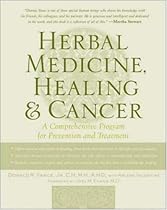 They are required components of all membranes within the body and, like vitamins and minerals, can only be obtamed by diet. There are two groups of EFAs, omega-6 and omega-3. The parent compounds of these two groups are linoleic acid (LA), from the omega-6 group, and alpha-linolenic acid (ALA), from the omega-3 group. LA and ALA are metabolized in the body by a series of alternating desat-urations in which a new carbon bond is introduced. This process leads EFAs to biological pathways that alter eicosanoids and/or prostaglandins, thromboxanes, leukotrienes, and hydroxy fatty acids. They are required components of all membranes within the body and, like vitamins and minerals, can only be obtamed by diet. There are two groups of EFAs, omega-6 and omega-3. The parent compounds of these two groups are linoleic acid (LA), from the omega-6 group, and alpha-linolenic acid (ALA), from the omega-3 group. LA and ALA are metabolized in the body by a series of alternating desat-urations in which a new carbon bond is introduced. This process leads EFAs to biological pathways that alter eicosanoids and/or prostaglandins, thromboxanes, leukotrienes, and hydroxy fatty acids. |
Ruth Winter
See book keywords and concepts |
 Therefore, the label shows you a product has less than the uppermost limits of DRVs for fats, cholesterol, and sodium which are:
• Total fat: less than 65 g
• Saturated fat: less than 20 g
• Cholesterol: less than 300 mg
• Sodium: less than 2,400 mg
Reference Daily Intakes (RDIs)
RDIs are a set of dietary references based on and replacing the recommended dietary allowances (RDAs, see Appendix E) for essential vitamins and minerals and, in selected groups, protein. Therefore, the label shows you a product has less than the uppermost limits of DRVs for fats, cholesterol, and sodium which are:
• Total fat: less than 65 g
• Saturated fat: less than 20 g
• Cholesterol: less than 300 mg
• Sodium: less than 2,400 mg
Reference Daily Intakes (RDIs)
RDIs are a set of dietary references based on and replacing the recommended dietary allowances (RDAs, see Appendix E) for essential vitamins and minerals and, in selected groups, protein. |
Donald R. Yance, j r.,C.N., M.H., A.H.G., with Arlene Valentine
See book keywords and concepts |
 Its foremost function is to absorb nutrients, including vitamins and minerals that fuel the body by the process of digestion. It also contains a major part of the body's detoxification system as well as antibodies that act as the first line of defense against infection.
Everything we put into our bodies has an effect upon us. It can be good or bad, immediate or long-term, predictable or not, but one way or another there will be an effect. Its foremost function is to absorb nutrients, including vitamins and minerals that fuel the body by the process of digestion. It also contains a major part of the body's detoxification system as well as antibodies that act as the first line of defense against infection.
Everything we put into our bodies has an effect upon us. It can be good or bad, immediate or long-term, predictable or not, but one way or another there will be an effect. |
Ruth Winter
See book keywords and concepts |
 DIETARY FOOD SUPPLEMENT • Any food product to which enough vitamins and minerals have been added to furnish more than 50 percent of the recommended daily allowance in a single serving, according to the FDA. Such foods must, of course, have ingredients identified on the label. DIETHANOLAMINE (DEA) • Colorless liquid or crystalline fatty acid from soybeans or coconut oils. It is used as a solvent, emulsifying agent, and detergent. Also employed in emollients for its softening properties and as a dispersing agent and humectant in other cosmetic products. DIETARY FOOD SUPPLEMENT • Any food product to which enough vitamins and minerals have been added to furnish more than 50 percent of the recommended daily allowance in a single serving, according to the FDA. Such foods must, of course, have ingredients identified on the label. DIETHANOLAMINE (DEA) • Colorless liquid or crystalline fatty acid from soybeans or coconut oils. It is used as a solvent, emulsifying agent, and detergent. Also employed in emollients for its softening properties and as a dispersing agent and humectant in other cosmetic products. |
John Heinerman
See book keywords and concepts |
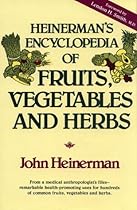 The balance of the ingredients are energy-producing carbohydrates and vitamins and minerals that work on certain strength-giving glands of the body.
In some European countries, beekeepers who inhale the pollen while routinely working with their hives during honey gathering periods, demonstrate more vibrant health and physical activity than at other times of the year. No wonder, since weight for weight, bee pollen contains more complete protein than accepted sources like steak, eggs or cheese do. The balance of the ingredients are energy-producing carbohydrates and vitamins and minerals that work on certain strength-giving glands of the body.
In some European countries, beekeepers who inhale the pollen while routinely working with their hives during honey gathering periods, demonstrate more vibrant health and physical activity than at other times of the year. No wonder, since weight for weight, bee pollen contains more complete protein than accepted sources like steak, eggs or cheese do. |












